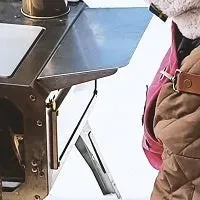
New Geological Study Links Grand Canyon's Landslide to Meteor Impact Events
New Links Between Grand Canyon Landslide and Meteor Crater Impact
A groundbreaking study published in the journal Geology reveals intriguing correlations between two prominent geological features in the American Southwest: the Grand Canyon and Meteor Crater. This thorough research, led by distinguished professors from the University of New Mexico and other experts, suggests that both significant events occurred around 56,000 years ago, raising compelling questions about their connection.
The investigation focuses on a dramatic landslide that dammed the Colorado River, forming a paleolake around the time of the Meteor Crater impact. Historically, driftwood and lake sediments found within Stanton's Cave have puzzled geologists. The cave's entrance is situated 150 feet above the current river level, suggesting an extraordinary flood or geological events that contributed to these findings.
Professors Karl Karlstrom and Laurie Crossey, along with co-researchers Chris Baisan from the University of Arizona and Dr. David Kring from the Lunar and Planetary Institute, have contributed to this study. They emphasize the improbability of such high-placed driftwood originating from any recent river flooding, leading to potential hypotheses surrounding its true age and geological significance.
Initially, during the 1960s, evidence of extinct ice-age species and crafted figurines by ancient inhabitants was discovered in the cave. The preliminary dating of the driftwood indicated an age exceeding 35,000 years, pushing the limits of radiocarbon dating technology available at that time. However, contemporary methods now allow for more accurate dating, revealing that the wood dates back to 56,000 years, which aligns closely with the age attributed to the meteor impact event.
Dr. Kring's decades of dedicated research on Meteor Crater have provided insight into the crater's geological history, including revised age estimates ranging from 49,000 to 63,000 years. His findings, indicating an age consistent with the newly-dated Grand Canyon driftwood, further establish a timeline of catastrophic events involving an asteroid impact.
According to Dr. Kring, the impact of the meteor would have caused a powerful shock wave, producing seismic effects on the Grand Canyon region that could have triggered the landslide. He calculates that an event of this magnitude might have registered as a magnitude 5.4 earthquake—potentially climbing to 6.0 under certain assumptions—signifying that these impacts resonate far beyond their immediate sites.
There are implications of this research that stretch into the realm of future geological hazards. The potential for landslides triggered by meteor impacts poses significant risks for communities located in mountainous regions, echoing the need for further studies in impact science and disaster preparedness.
Dr. Kring states, "This study illustrates a surprising gap in our understanding. Meteor Crater, being the best-preserved impact site on Earth, reveals that much more needs to be discovered about the nature of such impacts and their long-term consequences. We’re still chasing comprehensive evidence of such events to safeguard our understanding of planetary hazards that could threaten future missions, especially those to the Moon."
The collaborative efforts in this study embody an interdisciplinary approach, integrating insights from multiple scientific communities. Scholars from various institutions, including the University of New South Wales and the U.S. Geological Survey, worked together to uncover these fascinating geological narratives.
In an era where scientists rush to explore other planets, Dr. Kring advocates for a renewed focus on terrestrial impact studies that hold crucial implications for astronaut safety and geological awareness. As we delve into past mysteries, the findings regarding the Grand Canyon and Meteor Crater event serve to remind us of the impact our planet has endured and the possibilities it may face in the future.
The Grand Canyon's beauty and the eerie tranquility of Meteor Crater serve not only as tourist attractions but as vital clues to Earth's history and cautionary tales of its dynamic nature. This research invites ongoing dialogues about the interplay between astronomical phenomena and terrestrial geology.
In conclusion, the ongoing study of the ancient landscapes provides an invaluable perspective on natural disasters, influencing both scientific understanding and educational frameworks as future explorers prepare to venture into space. The legacy of these geological landscapes continues to inspire curiosity and foster knowledge about our solar system's history and its relationship with Earth.
Topics Other)










【About Using Articles】
You can freely use the title and article content by linking to the page where the article is posted.
※ Images cannot be used.
【About Links】
Links are free to use.